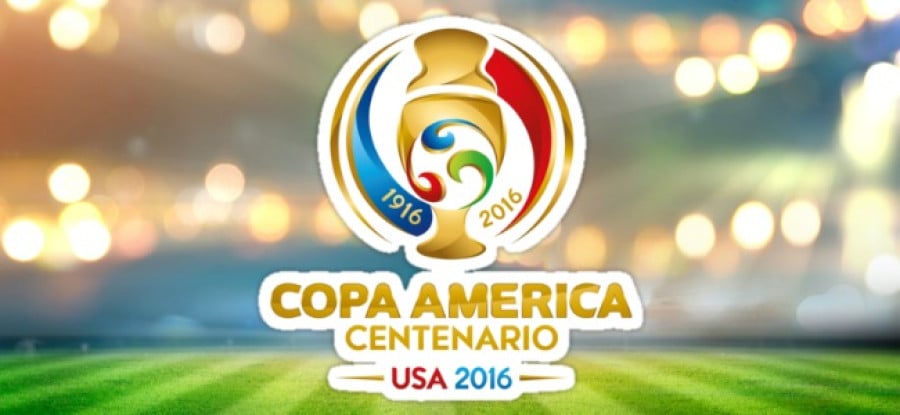Copa America Centenario – The challenges of organising a new inter-continental football tournament

2016 marks the one hundredth anniversary of the Copa America, and it deserves a special celebration. This is why, in addition to the normal Copa America tournament, it was decided that there should be an international competition contested between the best men´s football teams from every nation across all America.
The “Copa America Centenario” was born, and will take place in the USA this June 3rd to 26th. This article examines the background to this special tournament, and the organisational and regulatory challenges it has presented.
BACKGROUND
On 9 July 1916, the South American Football Confederation (known as “CONMEBOL”) was founded. It is now one of the Six Confederations that are part of FIFA. It includes ten members: Argentina, Bolivia, Brazil, Chile, Colombia, Ecuador, Paraguay, Peru, Uruguay and Venezuela.
The other American Confederation is the Confederation of North, Central American and Caribbean Association Football (known as “CONCACAF”). As with all of FIFA´s Confederations, the two are independent from the other, and both have their own governing bodies and have created their own regulations (or follow FIFA´s regulations in those fields where they do not have specific regulations).
The same year of its foundation, CONMEBOL decided to organize, with its members, the very first international continental football competition, called the South American Football Championship (by way of comparison, UEFA’s European Championships began in 1960). The tournament would determine who was the champion of South America. Its first edition was held in Argentina, and Uruguay won the tournament.
Later, in 1933, CONMEBOL decided to change the format of the tournament, allowing 12 teams to play. They began to invite two teams from countries that were part of a different confederation (almost always from CONCACAF) with México enjoying the most invitations to date. In 1975 the name of the tournament changed and it became the “Copa America”. The tournament is played every 4 years (with some interruptions), with the last one being played in Chile. The next one will be played in Brazil in 2019.
THE COPA AMERICA CENTENARIO.
To celebrate the Copa America’s 100-year anniversary, the Copa America Centenario was conceived.
Given that it is a one-off tournament, it presents a unique set of organisational and regulatory challenges. CONMEBOL and CONCACAF have joined forces to organize the tournament, while the United States Soccer Federation (USSF) are the hosting association. The ten CONMEBOL and six CONCACAF affiliated members will compete for the championship, and each are expressly required to bring their strongest “A” representative teams.1
Having two important confederations (both used to big events), and a wealthy host nation, one would think that the organisation of the tournament would be an easy task. However, that may not be so. Football has been under fire recently with issues of corruption, and former officials from both CONMEBOL and CONCACAF (which has only just elected its new president, Victor Montagliani2) are under investigation and/or subject to a criminal procedure (which are of course being led by the USA).
HOW THE TOURNAMENT WILL BE ORGANISED AND REGULATED
The full Regulations for the Copa America Centenario can be found here.3 Below, the author identifies specific sections of the Regulations for further analysis.
Organising Committee
The Organizing Committee is formed of two representatives from CONCACAF, two from CONMEBOL and one from the USA. It is responsible for the organization of the competition and has the legal capacity to take all final decisions (except in disciplinary matters).4
It has the power, among others, to decide which matches will be subject to doping tests and the duty to inform the Copa America Centenario Disciplinary Committee of any breaches of the applicable doping regulations.5
On the other side, USSF are responsible for hosting the Competition. Importantly, this means that USSF have the power (under the direction of the Organizing Committee) to establish relations and conclude contracts with third party entities (companies) to achieve this.6 This means that, even though the Organizing Committee have over arching control, the many of the practical organisational elements for hosting the tournament (both legal and economic) have been left to USSF.
To continue reading or watching login or register here
Already a member? Sign in
Get access to all of the expert analysis and commentary at LawInSport including articles, webinars, conference videos and podcast transcripts. Find out more here.
- Tags: Brazil | CONCACAF | Confederación Sulamericana de Fútbol (CONMEBOL) | Copa América | Copa América Centerario | Football | Governance | Mexico | Olympic Games Rio de Janeiro 2016 | Regulation | United States of America (USA) | US Soccer Federation (USSF)
Related Articles
- The funding and employment status of elite athletes – A comparison of the UK, USA and Germany
- The importance of trade marks in football – controlling brand value & avoiding own goals
- Indian Super League Regulatory Commission hand out heavy penalty to FC Goa
- Is sharing sports clips on social media an infringement of copyright under UK, European, Australian & US law?
Written by
Ricardo de Buen Rodríguez
Founding and Managing Partner of the Law Firm de Buen Rodríguez Abogados, S.C. in Mexico City. Member of the Court of Arbitration for Sport since 2002. He was part of the ad Hoc Division of the Court of Arbitration for Sport during the Olympic Games London 2012.

 Global Summit 2024
Global Summit 2024